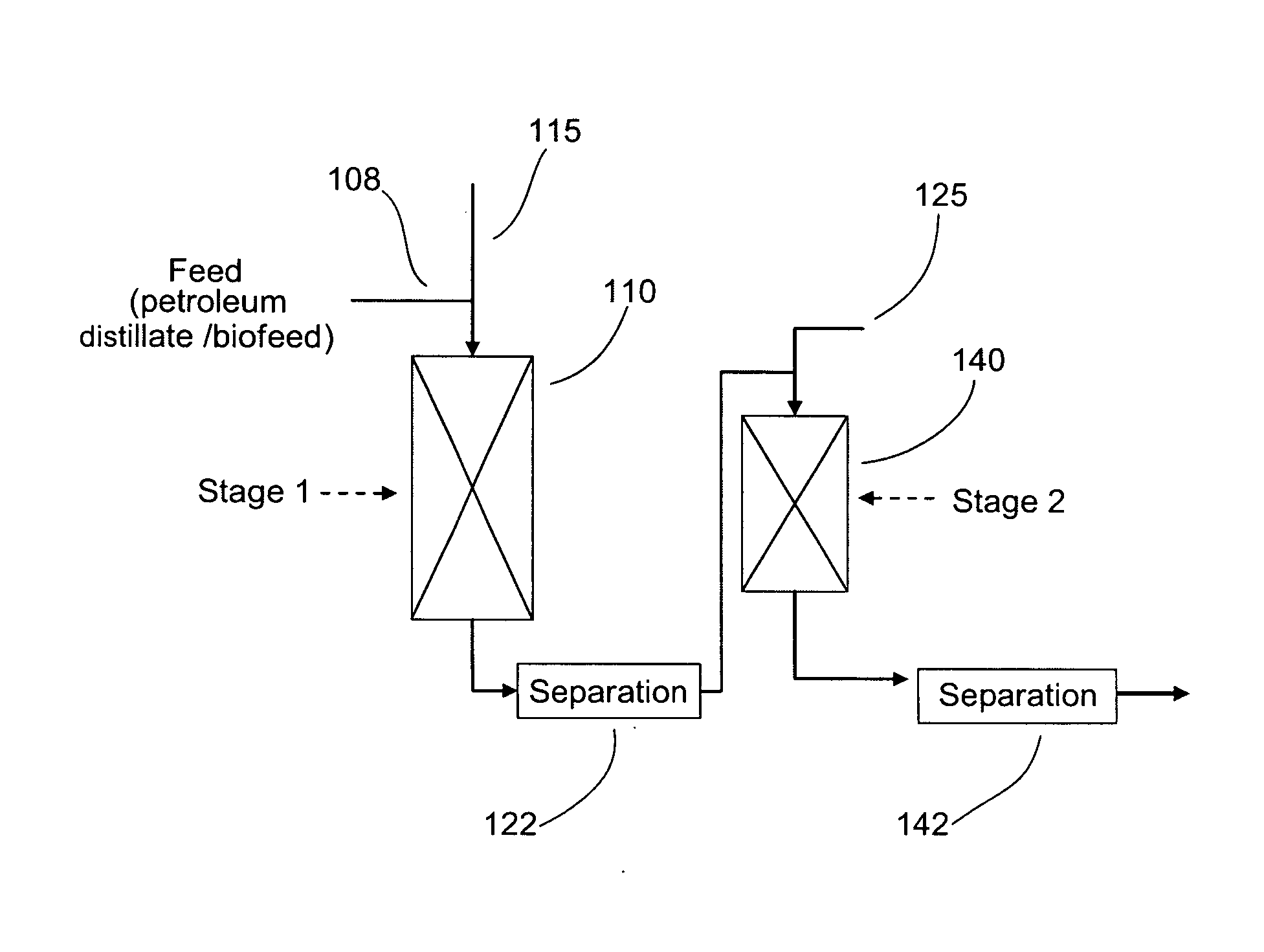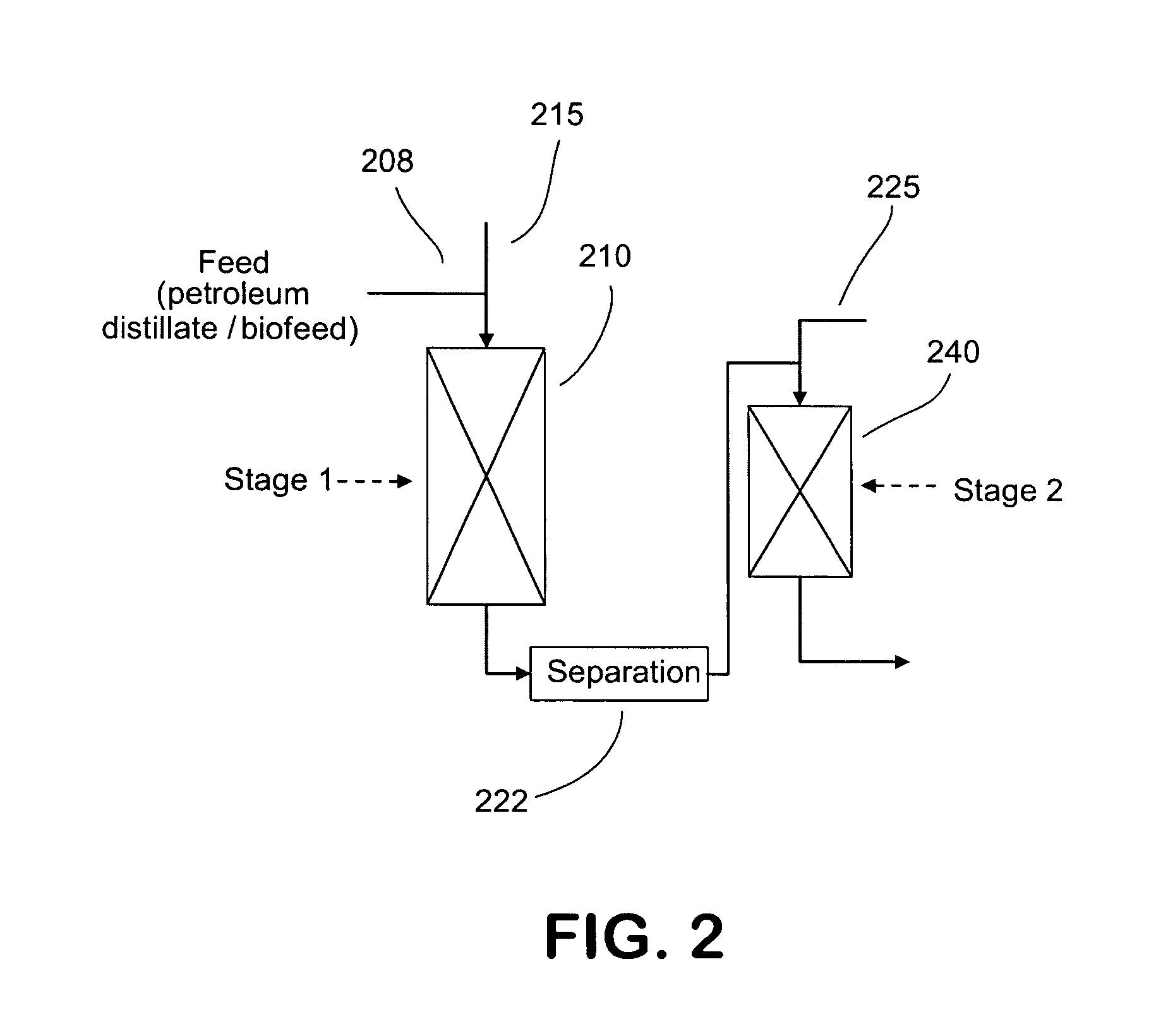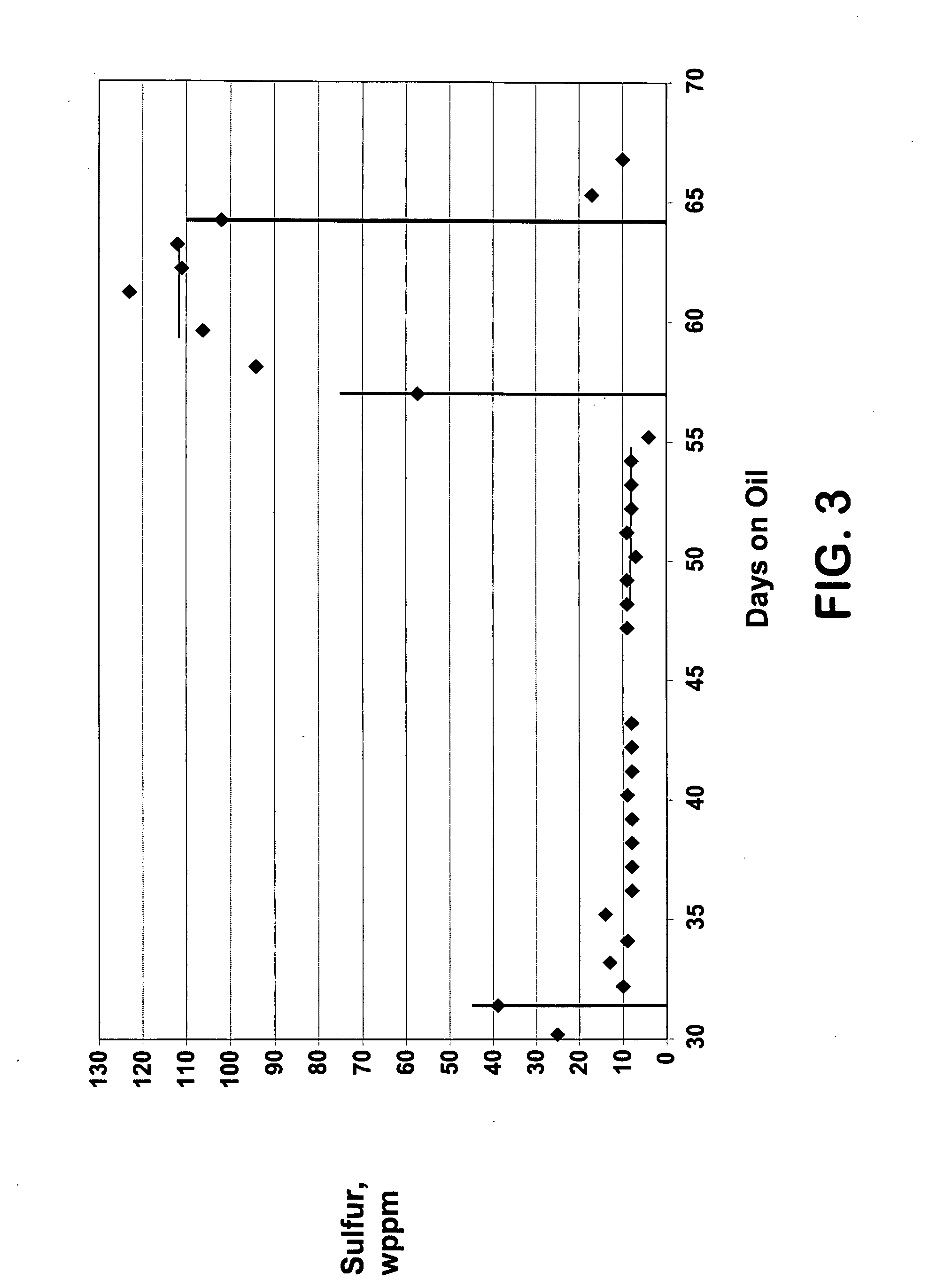Multi-stage co-processing of biofeeds for manufacturing of diesel range hydrocarbons
- Summary
- Abstract
- Description
- Claims
- Application Information
AI Technical Summary
Benefits of technology
Problems solved by technology
Method used
Image
Examples
example 1
Single Reactor Processing
[0044]The following example demonstrates the difficulty in co-processing of a bio-component feed. In this example, a feedstock is hydrotreated with a commercially available CoMo catalyst under hydrotreatment conditions. FIG. 3 shows data related to the sulfur content of the resulting treated feedstock. Initially, a mineral distillate feedstock containing 0.9 wt % sulfur was hydrotreated at 647° F. (342° C.), a total pressure of 390 psig, a treat gas rate of 1295 scf / bbl of 80% H2, and an LHSV of 0.3. As shown in FIG. 3, the Days on Oil corresponding to treatment of the mineral feed demonstrate that the conditions were sufficient to reduce the sulfur content to 10 wppm or less. At day 57, 10% by weight of palm oil was added to the mineral feedstock. The treat gas rate was also increased to 1480 scf / bbl to account for the increased oxygen content of the palm oil. Under these conditions, the sulfur content in the treated feedstock jumped to a value of about 100...
example 2
Multi-Stage Co-Processing
[0045]To overcome the difficulties in co-processing of biocomponent feedstock, a two stage reactor can be used. The conditions in the first stage can be selected to remove substantially all of the oxygen from the biocomponent feed, while reducing the sulfur in the feedstock to a manageable level. FIG. 4 shows the sulfur in the resulting product for the indicated reactor conditions and types of feedstocks processed. The initial processing conditions included a temperature of 621° F. (327° C.), a pressure of 400 psig, a hydrogen flow rate of 1100 scf / bbl of 80% H2, and a space velocity of 1.0. At the indicated times during processing, the conditions were modified to either increase or decrease the hydrogen flow rate (to 1300 scf / bbl, 1700 scf / bbl, or 750 scf / bbl), increase the temperature (to 630° F. / 332° C. or 640° F. / 337° C.), or to change the amount of palm oil included in the mineral feedstock (10 or 30 wt %). As shown in FIG. 4, the mineral feedstock was ...
PUM
 Login to view more
Login to view more Abstract
Description
Claims
Application Information
 Login to view more
Login to view more - R&D Engineer
- R&D Manager
- IP Professional
- Industry Leading Data Capabilities
- Powerful AI technology
- Patent DNA Extraction
Browse by: Latest US Patents, China's latest patents, Technical Efficacy Thesaurus, Application Domain, Technology Topic.
© 2024 PatSnap. All rights reserved.Legal|Privacy policy|Modern Slavery Act Transparency Statement|Sitemap



